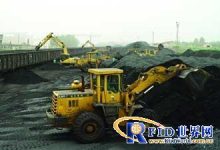
Equipment positioning and bulk cargo yard management
[ad_1]
Overview
Most of the domestic bulk cargo terminals are old terminals with a long history, with outdated production equipment and irregular management; problems such as outdated management models, chaotic yard management, and large loss of goods have affected the operation and efficiency of the terminal. These problems can be solved through equipment positioning and yard management, in conjunction with an information-based production management system. With many years of experience, Dunn has launched two major solutions: “Bulk and general cargo terminal equipment positioning and yard management” and “Bulk and general cargo terminal production and operation management”, hoping to improve the backward management of domestic bulk cargo terminals. Among them, the equipment positioning and yard management system combines technologies such as GPS, GIS, GPRS and the Internet of Things to provide a number of auxiliary production functions required by the terminal:
Locating and managing the equipment distributed in the yard, combined with GIS technology to graphically display the real-time location and running track of the production equipment;
Carry out real-time updates to the cargo stacking to achieve accurate yard management; combine with the production management system to optimize equipment scheduling and confirm operation results;
The equipment can be expanded to install a data acquisition gateway to collect the operating data of the field equipment in real time and realize the remote management of the equipment.
The system can save time and labor costs, increase the utilization rate of storage yards and equipment, and optimize terminal business processes.


system structure
Install the integrated controller in the cab of the mechanical equipment to collect the location information and operating status of the equipment. The data is transmitted to the management service platform through GPRS or WIFI network, and the positioning and yard management service software is running on the platform to provide graphical display, scheduling planning and yard management functions. Users provide services.

basic skills
Equipment positioning: The on-board terminal regularly sends position information and equipment status information to the monitoring center in accordance with the instructions of the management platform.

Graphic display: real-time display of equipment location and current status on the GIS map, and multiple devices can be automatically displayed at the same time.
Equipment tracking: track equipment running lines, store the location information of the target equipment, and can play back and print the track.
Abnormal alarm: When the equipment exceeds the pre-set control area, control path, and control speed, it will automatically alarm, automatically pop up an alarm window, and the monitoring center will give sound and light prompts.
Information query: query the classified static data of the equipment (including equipment files, vehicle owner files, historical information, etc.) through the business query page.
Intelligent dispatching: The system can combine with the production management system to give drivers correct dispatching, navigation and operation instructions. Dispatching information can be automatically transmitted in both directions, and the driver can manually feedback information.
Dynamic storage yard management: The system uses a spatial database to store dynamic storage yard data, and quickly draws new yards based on actual operations and combined with positioning information and formulates corresponding cargo attributes to achieve dynamic and accurate yard management.
extensions
Equipment remote monitoring: collect equipment status and fault data, realize remote monitoring and fault analysis, and provide remote management functions;
Equipment maintenance management: Provide maintenance reminders based on equipment operation status, record maintenance status and key component replacement history, analyze equipment health status, and provide equipment operation reports.


System performance
Up to 0.6M positioning accuracy
Device status update time <2S
Storage yard data storage history for 3 years, can be extended
Yard data update time <5S (GPRS)
Simultaneously manage up to 100 devices, which can be expanded
30 simultaneous online users
Power supply DC24V
Working temperature -20℃~50℃
Power consumption 25W
The integrated controller is maintenance-free and supports remote configuration
Features and advantages
High-precision device positioning: through the differential GPS positioning system, the device positioning accuracy can reach up to 0.6 m, which can meet the user’s requirements for positioning accuracy; for places that cannot be covered by GPS, a regional wireless positioning system can be installed with a maximum accuracy of 15cm;
Simple maintenance and easy to use: Industrialized design equipment is maintenance-free and cost-effective. The system supports remote configuration and maintenance, which is extremely convenient to use, and maintenance personnel do not need a lot of professional knowledge;
Real-time monitoring of integrated information of the terminal: Realize the inventory management of the terminal yard cargo and the real-time dispatch of mobile machinery on the electronic map of the terminal area, and break through the organic combination of the electronic map of the terminal and the information of the goods and machinery in the production management.
Graphical interactive formulation of site plans: Arrange the loading and unloading site plans in the visualized graphical interface of the yard to reduce the difficulty of making site plans and improve the accuracy and enforceability of the plans.

Customer benefits
Intelligent scheduling is realized through equipment positioning, which improves equipment utilization and production efficiency. Realize dynamic planning and data update through real-time yard management, improve the yard utilization rate and the accuracy of cargo management, reduce personnel input, and improve the service level of the terminal.
The system covers a comprehensive range of business functions, well monitors all aspects of production management, and helps terminal managers and business personnel to plan, supervise and control production.
The system integrates the functions of multiple subsystems, greatly improves the efficiency of the internal production process of the terminal, reduces personnel redundancy and unnecessary manual entry, not only saves expenses, but also greatly improves the accuracy of production, and promotes the level of production management of the terminal. improve.
[ad_2]



